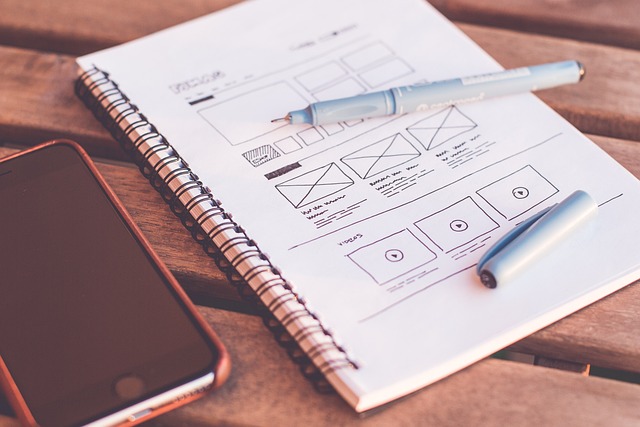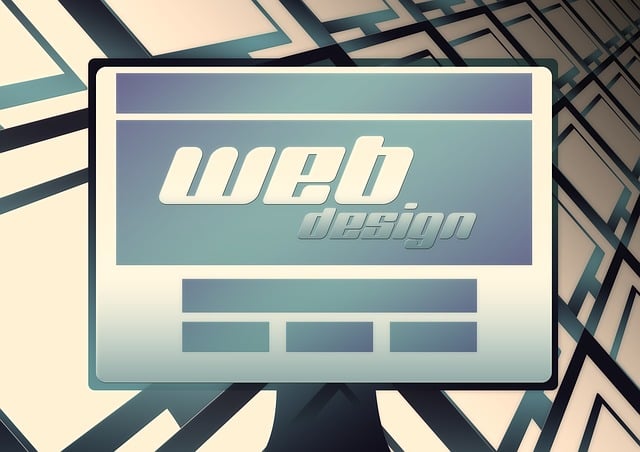In web design, prioritizing user experience (UX) is crucial for creating successful online spaces. Effective UX focuses on intuitiveness and efficiency, using clear calls-to-action, logical structures, and balanced aesthetics to engage users and drive business outcomes. Key elements include responsive layouts that adapt to various devices, strategic visual hierarchy guiding users through content, and accessible navigation menus with search functionality. Balancing aesthetics and functionality ensures seamless user interaction, leading to higher conversion rates, increased retention, and expanded online reach.
In today’s digital landscape, a website’s success hinges on its layout design. Effective web design transcends aesthetics; it’s about crafting an optimal user experience (UX) that keeps visitors engaged. From understanding UX fundamentals to implementing responsive design for diverse screens, this article explores key elements of successful website layouts. We’ll delve into visual hierarchy, navigation best practices, and the delicate balance between aesthetics and functionality, empowering you with insights for creating impactful web designs.
Understanding User Experience and Its Role in Web Design

In the realm of web design, understanding user experience (UX) is paramount. It’s about crafting an online environment that not only looks appealing but also feels intuitive and easy to navigate. Effective UX design ensures users can effortlessly achieve their goals, whether it’s finding specific information, making a purchase, or signing up for a service. By prioritizing user needs, designers can create websites that foster engagement and satisfaction.
Web design is not just about aesthetics; it’s about facilitating interaction. A well-designed website should seamlessly guide users through its pages, providing clear calls to action and logical pathways. By incorporating UX principles, designers can enhance usability, reduce user frustration, and ultimately drive better outcomes for businesses. This, in turn, translates into higher conversion rates, increased customer retention, and a positive online experience that encourages repeat visits.
Key Elements of an Effective Website Layout

An effective website layout is crucial for creating a positive user experience and maximizing engagement. Key elements to consider include intuitive navigation, clear call-to-actions (CTAs), and well-organized content hierarchy. A successful web design should guide users effortlessly through the site, enabling them to find information or complete tasks with minimal friction.
Visual aesthetics play a significant role as well. Balanced use of white space, engaging typography, and appealing color schemes enhance readability and foster brand identity. Incorporating high-quality images and multimedia elements can further enrich the user experience, but these should be optimized for web performance to avoid slow loading times. Ultimately, an excellent website layout balances functionality, aesthetics, and user needs, ensuring visitors stay engaged and converted.
Visual Hierarchy: Organizing Content for Optimal Engagement

In effective web design, visual hierarchy plays a pivotal role in guiding users through a website’s content. It’s the strategic arrangement of elements on a page, dictating what draws the viewer’s eye first, second, and beyond. Through size, color, contrast, and placement, designers can emphasize crucial information while ensuring less important details don’t overshadow it. This careful organization fosters optimal engagement by directing users’ attention to call-to-actions, key features, or essential navigation links, ultimately enhancing their overall experience.
In the realm of web design, visual hierarchy isn’t just about aesthetics; it’s a functional element that improves usability. By prioritizing content, designers can ensure that visitors quickly find what they need, whether it’s learning more about a product, signing up for a newsletter, or delving into a specific section of the site. This strategic layout not only increases user satisfaction but also encourages them to explore further, thereby boosting time spent on-site and potential conversions.
Responsive Design: Adapting to Various Screens and Devices

In modern web design, responsive layout has become an indispensable aspect, ensuring websites seamlessly adapt to different screen sizes and devices. This approach is pivotal in providing an optimal user experience across desktops, tablets, and smartphones. By employing flexible grids, flexible images, and media queries, designers can create layouts that adjust dynamically, maintaining visual hierarchy and functionality regardless of the viewing platform.
Responsive design not only caters to the convenience of users but also aligns with search engine optimization (SEO) best practices. Google, for instance, favors mobile-friendly websites in its search rankings, acknowledging the growing number of users accessing the internet via mobile devices. Thus, adopting responsive design is not just a matter of enhancing usability; it’s a strategic move to boost web visibility and engagement in the competitive landscape of online presence.
Best Practices for Navigation and Accessibility

In effective web design, navigation is key. A well-structured navigation system allows users to explore a website effortlessly, enhancing their overall experience. Best practices involve keeping menus concise and organized, using clear labels, and ensuring consistency across pages. Dropdown menus and breadcrumbs can improve usability by providing hierarchical context and helping visitors understand their location within the site. Additionally, incorporating search functionality empowers users to locate content swiftly.
Accessibility is another vital aspect. Web design should adhere to standards like WCAG (Web Content Accessibility Guidelines) to ensure all users, including those with disabilities, can access and interact with the website. This includes using alternative text for images, providing keyboard navigation, implementing proper color contrast, and structuring content semantically. These practices not only comply with legal requirements but also broaden the site’s audience reach.
Balancing Aesthetics and Functionality for a Successful Website

In the realm of web design, striking a harmonious balance between aesthetics and functionality is paramount for creating successful websites. While visually appealing designs capture users’ attention, functional layouts ensure that visitors can navigate effortlessly and achieve their desired goals. A thoughtful blend involves considering user experience (UX) as the cornerstone, where intuitive design elements, such as clear call-to-actions and seamless navigation, take precedence.
This balance is achieved by prioritizing content organization, ensuring fast loading times, and incorporating responsive design principles to cater to diverse devices and screen sizes. Ultimately, a website that combines captivating visuals with robust functionality leaves a lasting impression, fostering user engagement and driving conversions, thereby solidifying its place in the competitive digital landscape.
